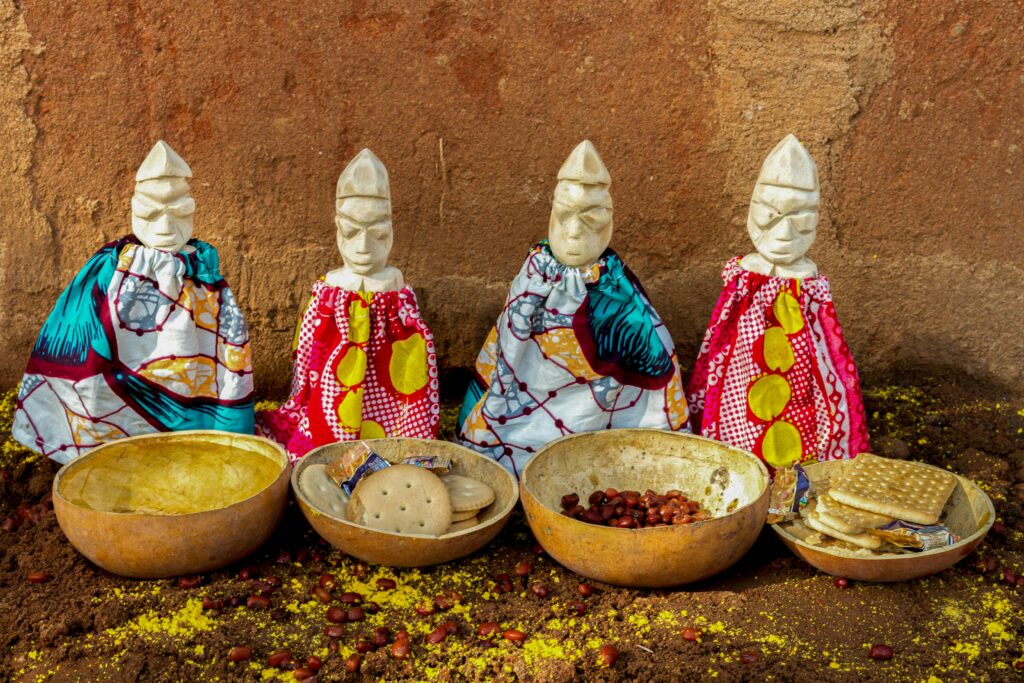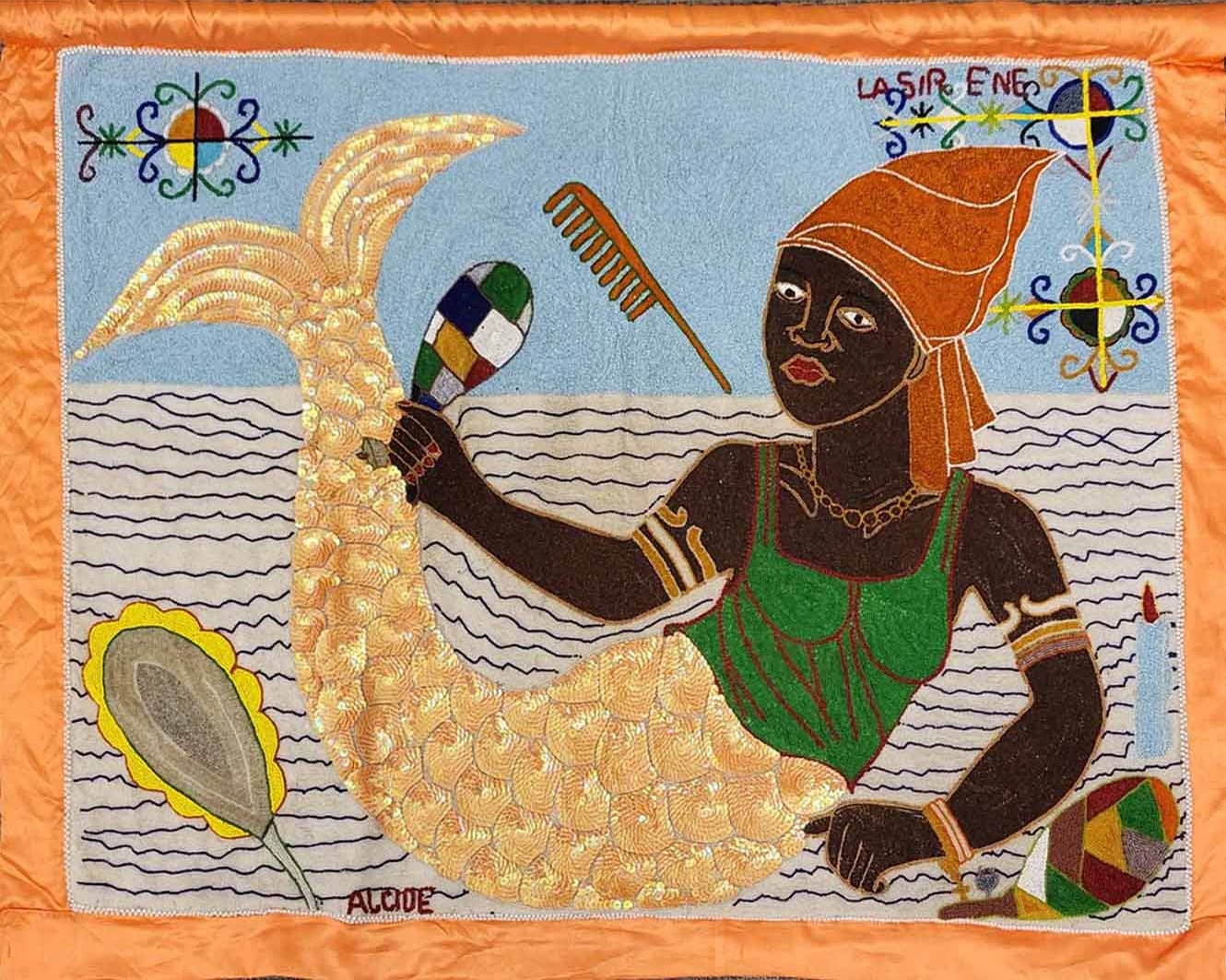In writing this essay, I posed two questions to ChatGPT and Gemini. In response to the first – Can technology be sacred?- both systems acknowledged the seemingly contradictory relationship between what is considered sacred and secular. At the same time, they noted that boundaries between the two are porous.
To the second question – Is technology sacred or secular?- both chatbots maintained that such categorization is directly tied to functionality. Namely, technology can function as both. It yields tools that are scientifically developed to solve practical problems; in this way, technology is secular. However, it can also function as sacred.

While Gemini discusses technological sacredness in relation to transcendence, ChatGPT cites specific examples of technology acting as “sacred-adjacent.”[1] The divinatory capacities of mobile devices, algorithmic transmissions of esoteric knowledge, and the actualization of human creativity through technological means are just a few examples of technology exhibiting sacred qualities.
What this bot-talk reveals are intriguing intersections between the sacred and secular as they occur in the digital age. In this essay, the sacred is broadly understood as “a capacity or openness to what is beyond [humans].”[2] Rituals enable an engagement with superhuman phenomena, whether in the form of divinities or immaterial energies. In this way, both religious rituals and digital technologies possess the capacity to act as media that elicit and transmit the sacred. As will be shown, religious rituals conducted online wonderfully capture what will be referred to as the “crossroads” between the sacred and the secular.
Online Religious Rituals: Working the Crossroads on/of Social Media
From Christians posting prayers to bulletin boards and listservs to Hindus worshiping through virtual pujas to the online spellwork of “technopagans,” diverse mediations of religious rituals were evident in the early days of the Internet.[3] Today, contemporary religious ritual practices online can be seen across various social media platforms like Instagram, X (formerly Twitter), and TikTok. These activities include practices that are connected to well-known religious traditions (Christianity, Judaism, Islam, Buddhism, and Hinduism), to emerging or marginal religious traditions like Mormon Transhumanism, and even to “tech-religions” such as Googlism (i.e., the Church of Google) and the blockchain-based church 0xΩ.[4]
Connecting these past and present Internet-mediated religious rituals is the human desire to engage with something that is beyond the human: the sacred. More importantly, online religious rituals occur in the interstices between the technologies employed and the sought-after sacrality. They exhibit what Stewart Hoover and Nabil Echchaibi call a “third-ness,” or a positionality “characterized by instances of in-betweenness,” and whose online presence provides “something alternative to other, prior, or dominant narratives.”[5] Online religious rituals, then, can be understood as points of intersection between sacred and secular axes. These ritual moments of in-betweenness can also be understood as crossroads, particularly as conceived in Africana conjuring rituals.
Africana conjuring rituals are practices directly associated with African-derived religious traditions such as Vodou, Voodoo, and Hoodoo. Personal road-opener rituals, ritualistic work involving sacrifices for the care of communities, and protection rituals are just a few ways that practitioners of these traditions engage with social media. The Internet offers yet another medium for practitioners to engage superhuman forces, or the sacred, to elicit efficacious outcomes. While engagement of this kind occurs across various social media platforms, TikTok is now the most visible place to witness how practitioners employ rituals to conjure the crossroad possibilities of cyberspace.

Consider, for example, the divination practices of one such practitioner: Afro_Spiritual.[6] To date, he has over 350,000 followers (referred to as “loves”), and his videos have garnered over six million likes. His livestream Hoodoo divinations are the most popular. In each reading, he uses the same objects: a King James edition of the Holy Bible, a deck of red playing cards, a seven-day white votive candle, and a glass of water. He proceeds to read the cards for viewers by flipping them one by one onto the Bible. What is presented here is known in Hoodoo as crossroad work. In Hoodoo, the crossroad is a place of convergence where spiritual and physical dimensions meet. In Afro_Spiritual’s livestreams, this coming together yields ritually induced messages that are offered to viewers. Nevertheless, an additional form of intersectionality is captured in these online divination practices. Cyberspace functions as more than just a tool. Afro_Spiritual works cyberspace, alongside the Bible, card decks, candles, and water. Cyberspace, like selected ritual materiality, is conducive to the movement of spiritual currents. The Internet is a secular network of computers designed to propagate global communication, but in the hands of Hoodoo practitioners like Afro_Spiritual, it transforms into a workable sacred space. In this manner, cyberspace is a crossroad space. Technology undergoes sacralization through ritual practices of Africana religious practitioners.
Concluding Thoughts: Sacralization of Technology or Not?
Technology is more than a mere conduit for the sacred. It possesses the capability to take on sacred, or superhuman qualities. What results here is a specific type of symbiosis that leads to a co-constitution between sacred and technological dimensions, “a co-constitution that implies a simultaneous secularization of the sacred and a sacralization of technology.”[7] While religious rituals blur the boundaries between the sacred and the secular, what happens when technology becomes the sacred without any distinctions? Interestingly, my bot-talk with ChatGPT offered a response to this very question. ChatGPT acknowledged that technology could one day attain sacred status, potentially rendering traditional religious practices obsolete. Yet it followed this assertion with the words: “Mankind needs more than an algorithm; they need mystery and rituals.”

Footnotes
[1] Gemini, Can technology be sacred? Is technology sacred or secular?, April 12, 2025, Google, https://gemini.google.com/app/f5428847731fbc22. ChatGPT, Can technology be sacred? Is technology sacred or secular?, April 12, 2025, OpenAI, https://chatgpt.com/?model=auto.
[2] Michael Bernard-Donals and Kyle Jensen, eds., Responding to the Sacred: An Inquiry into the Limits of Rhetoric (University Park: Penn State University Press, 2021).
[3] Christopher Helland and Lisa Kienzl, “Ritual,” in Digital Religion: Understanding Religious Practice in Digital Media, second edition, eds. Heidi A. Campbell and Ruth Tsuria (Abingdon: Routledge, 2021); Xenia Zeiler, ed., Digital Hinduism (Abingdon: Routledge, 2020); Erik Davis, “Technopagans: May the Astral Plan be Reborn in Cyberspace,” Wired, July 1, 1995. https://www.wired.com/1995/07/technopagans/.
[4] Margarita Simon Guillory, “New Religious Movements and the Internet,” in The Oxford Handbook of Digital Religion, eds. Heidi A. Campbell and Pauline Hope Cheong (Oxford: Oxford University Press, 2022), 127-128; Liam Kelly, “Blockchain was Always a Religion: And Now It’s Got Its Own Church,” Wired, June 28, 2028, https://www.wired.com/story/blockchain-religion-church-bitcoin/.
[5] Stewart Hoover and Nabil Echchaibi, eds., The Third Spaces of Digital Religion (Abingdon: Routledge, 2023), 1-36.
[6] Afro_Spiritual, https://www.tiktok.com/@afro_spiritual.
[7] Dorien, Zandbergen, “Silicon Valley New Age: The Co-constitution of the Digital and the Sacred,” in Religions of Modernity: Relocating the Sacred to the Self and the Digital, ed., Stef Aupers (Leiden: Brill, 2010), 183.
Works Cited
Bernard-Donals, Michael and Kyle Jensen, eds. Responding to the Sacred: An Inquiry into the
Limits of Rhetoric. University Park: Penn State University Press, 2021.
Davis, Erik. “Technopagans: May the Astral Plan be Reborn in Cyberspace.” Wired, July 1, 1995. https://www.wired.com/1995/07/technopagans/.
Guillory, Margarita Simon. “New Religious Movements and the Internet.” In The Oxford Handbook of Digital Religion, edited by Heidi A. Campbell and Pauline Hope Cheong. Oxford: Oxford University Press, 2022: 118-135.
Helland, Christopher and Lisa Kienzl. “Ritual.” In Digital Religion: Understanding Religious Practice in Digital Media (second edition), edited by Heidi A. Campbell and Ruth Tsuria. Abingdon: Routledge, 2021: 40-55.
Hoover, Stewart and Nabil Echchaibi, eds. The Third Spaces of Digital Religion. Abingdon: Routledge, 2023.
Kelly, Liam. “Blockchain was Always a Religion: And Now It’s Got Its Own Church.” Wired, June 28, 2028, https://www.wired.com/story/blockchain-religion-church-bitcoin/.
Zandbergen, Dorien. “Silicon Valley New Age: The Co-constitution of the Digital and the Sacred.” In Religions of Modernity: Relocating the Sacred to the Self and the Digital, edited by Stef Aupers. Leiden: Brill, 2010: 161-186.
Zeiler, Xenia ed., Digital Hinduism. Abingdon: Routledge, 2020.


